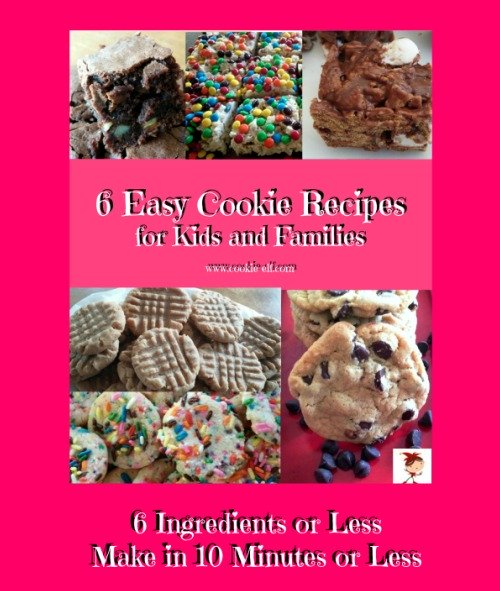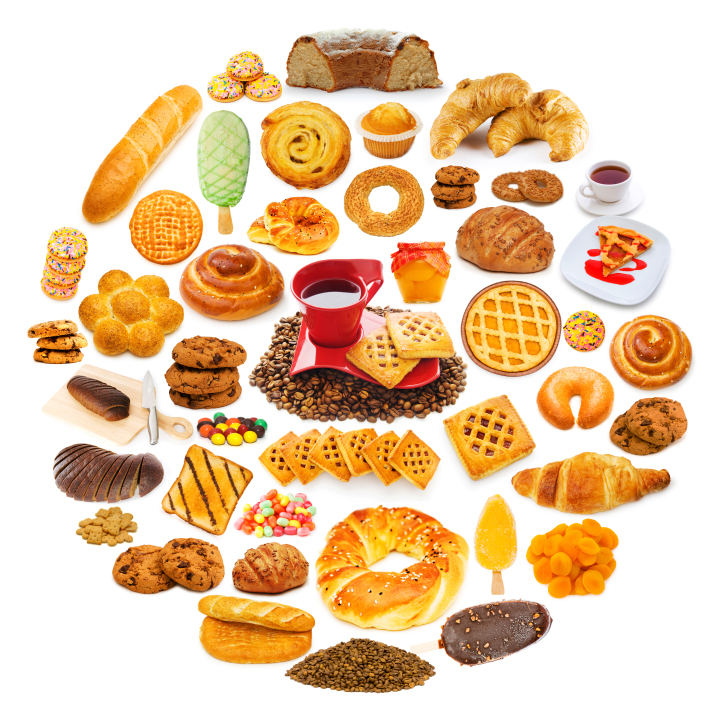What Is a Cookie?
A History of Cookies and How They Came To Be
A cookie is a small, baked sweet treat.
Cookies came to be when small amounts of batter were dropped onto baking pans to test oven temperature before baking a cake.
Originally called “little cakes” (from the Dutch word koekje), the name stuck over time – both due to the treat’s small size and the fact that a cookie can be eaten by hand rather than served on a plate with a fork.
Then cooks discovered that using less moisture in cake batter yields a treat with a firmer, crisper texture.
Soon, “little cakes” were intentionally prepared in their own right as a small, individually-portioned finger food. With moisture removed, cookies stay fresh much longer than a sponge-like cake.
What All Cookies Have in Common
The Cookie Elf has learned that “one size does not fit all” when it comes to cookie recipes.
If it’s an individually-portioned, baked, sweet treat, the Elf feels confident calling it a cookie.
Having said that, most cookies contain fat, flour, eggs, and sugar – in different forms and amounts.
Naturally, there are exceptions.
Gluten-free cookies do not contain flour. No bake cookies may contain all or some of those ingredients but do not require oven time.
Different Ways Cookies are Categorized
While the first cookies were thin, small crisp cakes made from sweetened dough, today cookie recipes appear in thousands of variations. They can be soft, chewy, or crisp. They can be big or small, plain or fancy. They can be simple or complex.
How can you keep it all straight and know what to bake?
The Cookie Elf uses these three commonly-accepted ways to classify cookies.
Classification #1: Method of Preparation
Cookies are most often categorized by the way they are prepared or formed. Cookie dough can be dropped in spoonfuls on a large, flat pan (drop cookies), spread in the pan and cut after baking (bar cookies), shaped with a cookie press or mold (press cookies and molded cookies), rolled flat and cut (cut out cookies), or shaped into a log roll and sliced (refrigerator cookies) … or employ a number of other methods.
Classification #2: Ingredients
Cookies can be classified by a dominant ingredient, such as nuts, fruit, spice, or flavoring, allowing them to take on the identity of that special ingredient. Think chocolate chip cookies, peanut butter cookies, ginger bread cookies, or almond cookies.
Classification #3: Season
Cookies have become interwoven with tradition and memories. Because of that, they are often associated with a particular a season or occasion … like Christmas cookies, holiday cookies, wedding cookies, and even Valentine’s cookies.
More Cookie Complications ...
To complicate matters, most cookie recipes can be categorized in more than one classification. For instance, the same dough can either be hand shaped into a ball, dropped from a spoon, or spread in a pan. No matter. The Elf’s best advice: find cookies you like and call them what you want.
Other Names for "Cookie"
Biscuit (United Kingdom): the common British equivalent for cookie
Biscotto (Italian): oblong-shaped, twice-baked sweet and crunchy biscuits
Tray Bakes (United Kingdom): bar cookies
More About Cookies and Cookie Recipes
Different types of cookies: how to classify them ...
The Elf's Cookie Recipe Writing Tips ....
How cookie dough is different from cake batter ...
Red Velvet Cake History: fun baking and cookie trivia ...
Return from What Is a Cookie? to The Cookie Elf home
Find A Cookie Recipe or Cookie Baking Tip
The Cookie Elf
FREE! 6 Easy Cookies Recipes for Kids and Families
Get your free copy here or when you fill in the form below.





New! Comments
Have your say about what you just read! Leave me a comment in the box below.